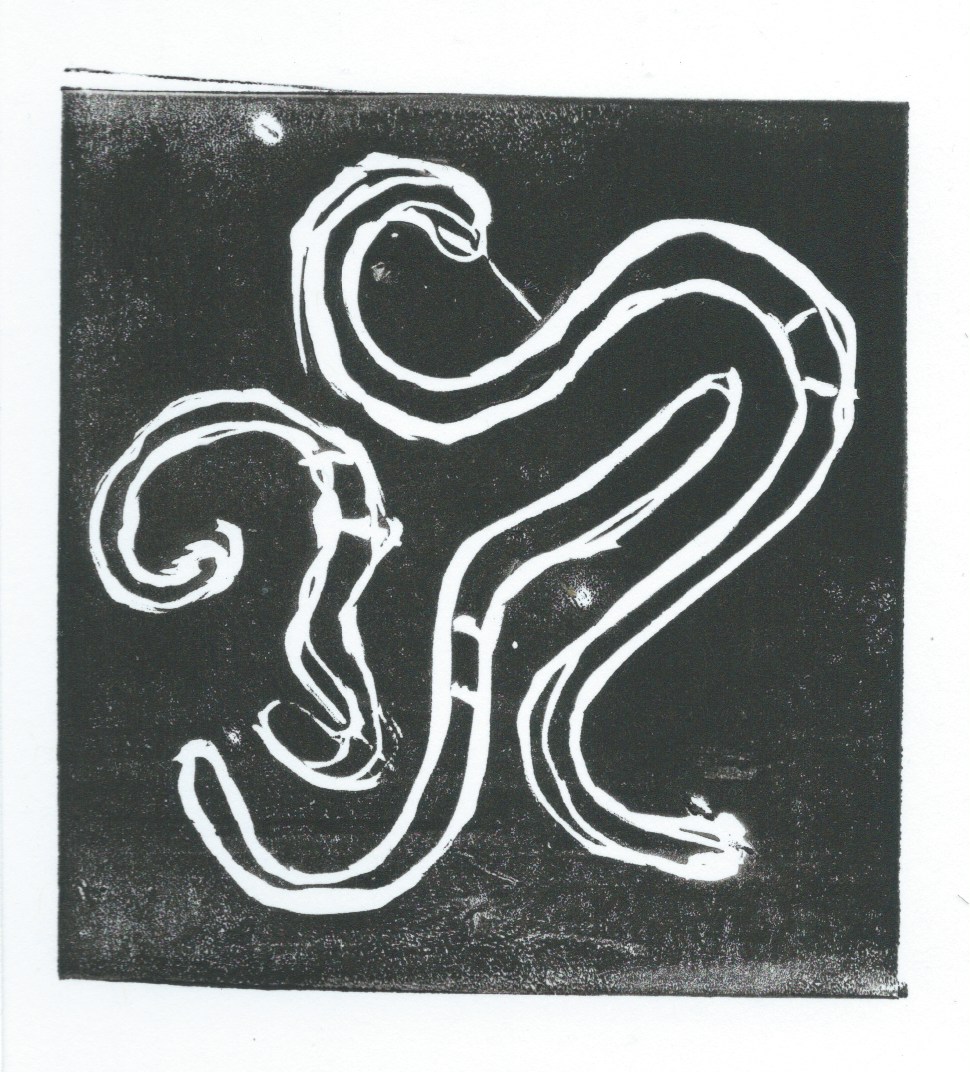Nature's Ploughs
Linocut Print of Earthworms by Manu
This is what Charles Darwin called them: nature's ploughs. Earthworms and composting worms are my all time superheroes. My research on these gorgeous wiggly beings has been quite extensive in the last month, and I have learned so much.
Worms have hearts. Up to five sets of them. Their blood contains hemoglobin like ours. Their skin is very sensitive to light, which is why they like to live under sun shades made of decaying leaves and organic matter. Their 'teeth' are sand and rock particles inside their super powerful, muscly gizzards, which grind up organic matter.
What do they eat? Bacteria, fungi, nematodes, protozoa and organic matter: where there are earthworms, there are all of the above. Everything you need in a thriving soil food web. This alone makes it worth jumping up and down when you see them in your soil, but wait, there's more.
Soil passed through an earthworm has double the amount of organic matter it had before it went in. An acre of good soil contains two to three million of them, which can move about 18 tons of soil per year, over and over again. Doubling, tripling, quadrupling the amount of rich organic matter in your soil.
Worms also have special enzymes inside their gizzards which unlock chemical bonds chaining up nutrients. In other words, once these nutrients have traveled through a worm, they are finally in a form that plants have access to and eat.
There are something like 7000 species of earthworms. Composting worms, such as the red Wriggler Eisenia fetida, prefer to live near the surface of soil, under leaf litter or mulch (or in your worm farm) in cool, moist, dark, oxygen-rich environments with a good amount of accessible food.
Deep-burrowing earthworms like Lumbricus terrestris are the ones that create horizontal or vertical tunnels going deeper underground, leaving space for oxygen, water and plant roots to easily penetrate the soil.
Their sensitive skin means they move out when synthetic fertilisers and glyphosate herbicides are used, subsequently leaving a gaping hole in the soil food web. No more worms, no more good microbes, a bit like the Brown Barbaloots moving out in Dr Seuss' The Lorax.
We need to look after these burrowing, shredding, wiggly, five-hearted beings with all our might.

